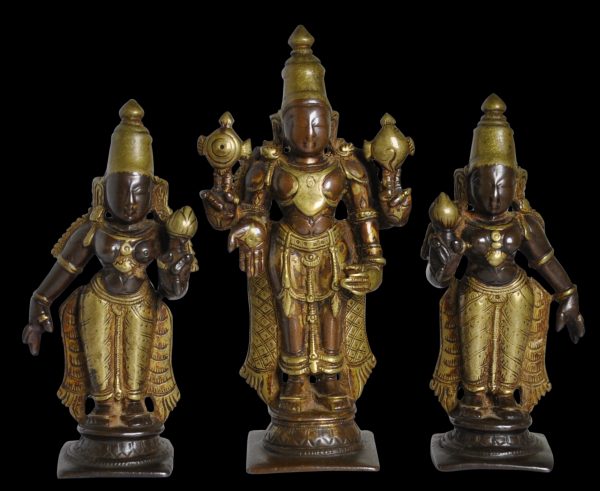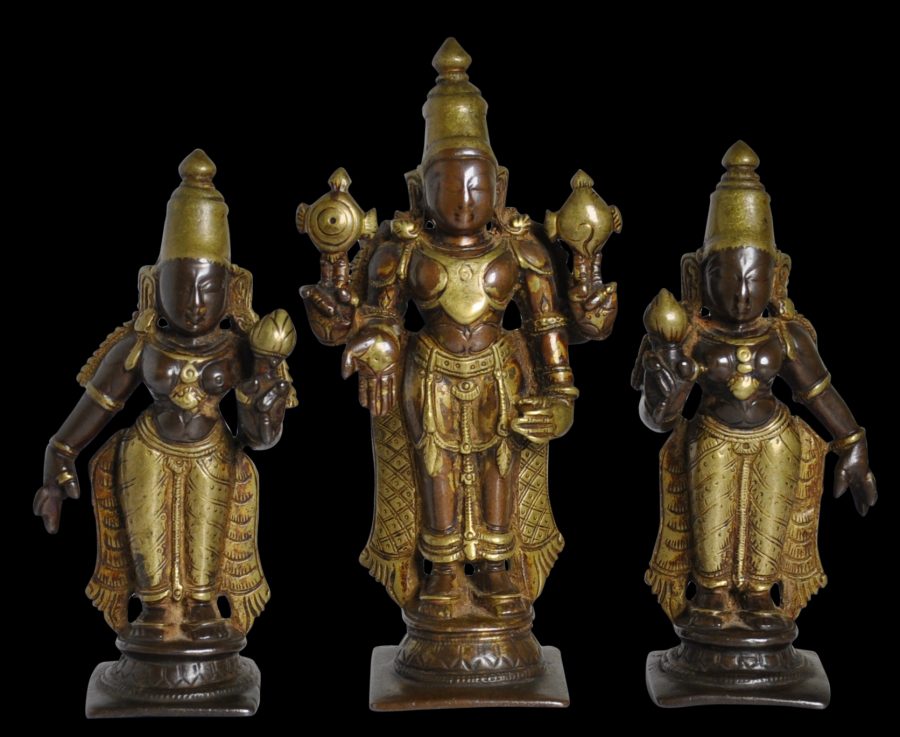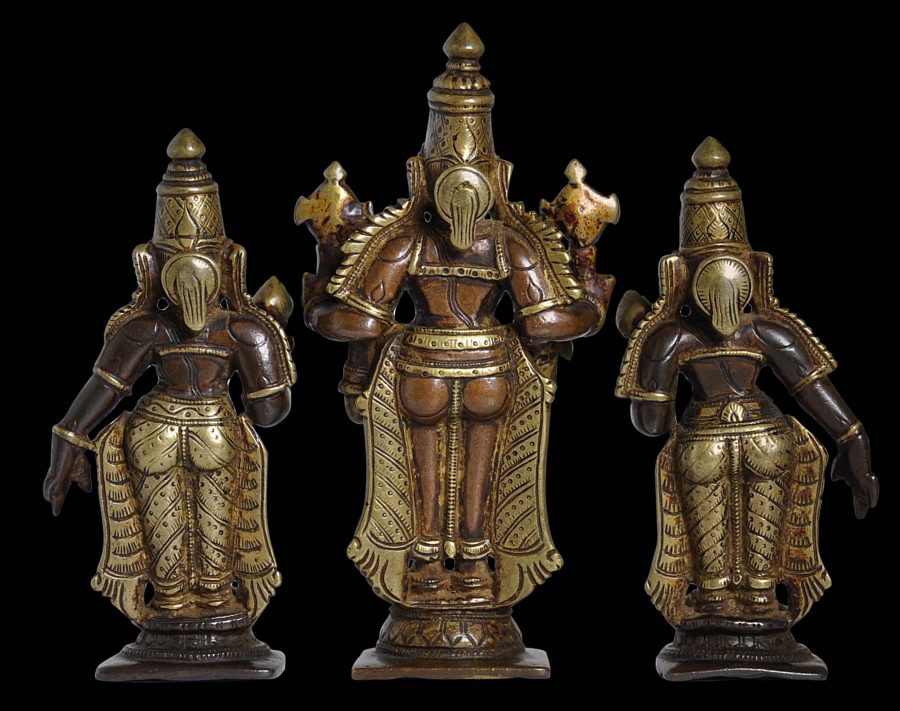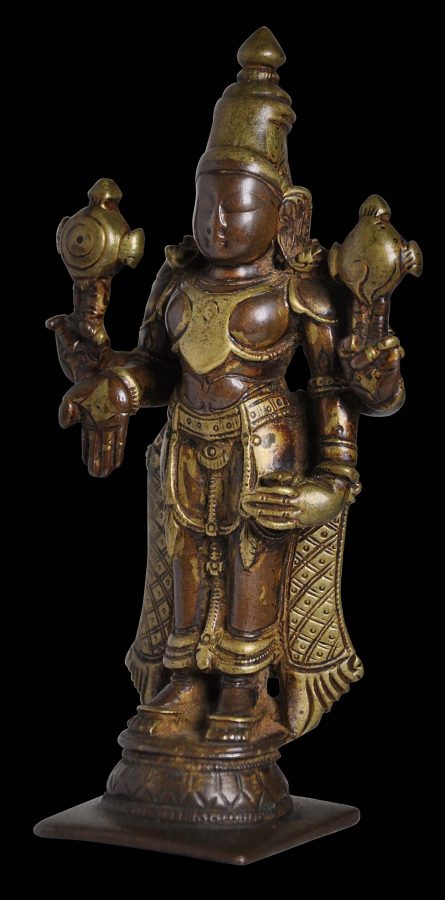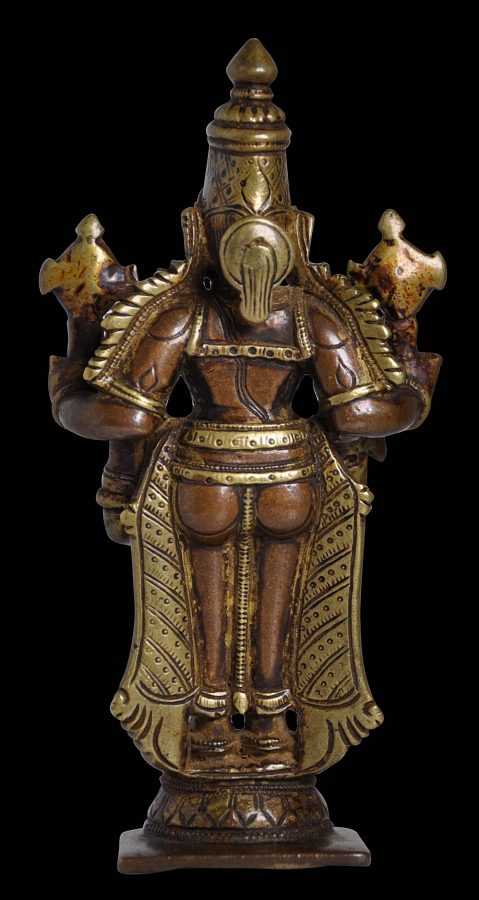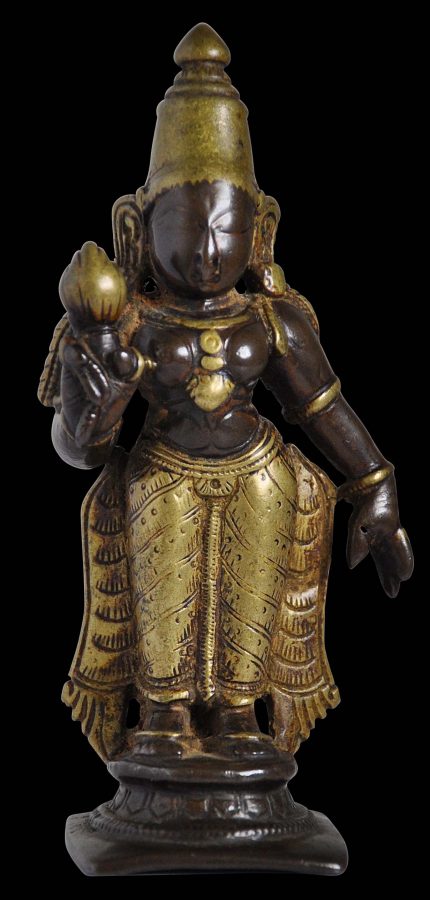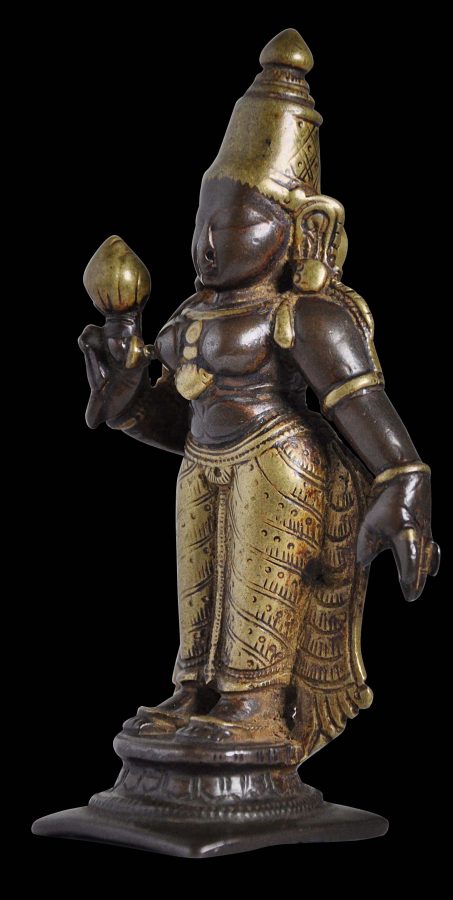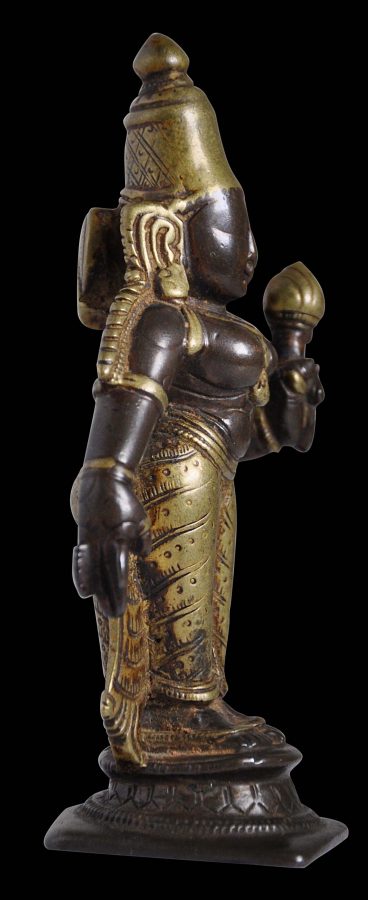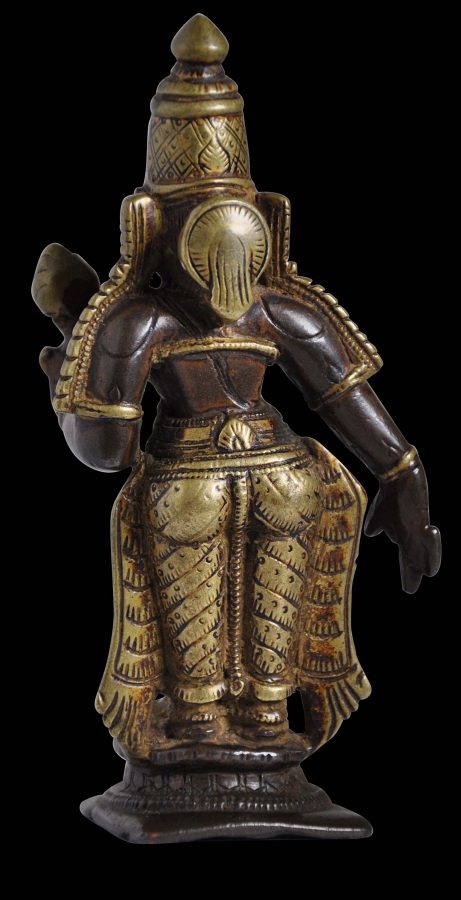This matched trio of Vishnu and his two consorts Bhu Devi and Sri Devi has been decorated with what is known as the Ganga-Jumna technique whereby each object has been cast in bronze and finished with applied brass highlights. The term Ganga-Jumna relates to India’s two largest rivers which traditionally have had two different colours on account of differing types of soil sediment suspended in their waters. This type of work was done in the 18th and 19th centuries in and around Tanjore (now known as Thanjavur), in Tamil Nadu, in southern India.
Each of the three images has wonderful detail – but also ample puja wear from ritual handling and bathing.
Vishnu is shown standing, holding a chakra and a sankha in his secondary arms and his principal arms are in varada, by his side. He wears various body ornaments, a dhoti with prominent, flowing side ribbons decorated with cross-hatching, and a tall crown. His consorts are similarly attired. Each figure stands on a lotus pedestal.
Complete earlier sets of Vishnu and his consorts are difficult to find; typically the pieces become separated from one another. This set is rarer still having been completed in the Ganga-Jumna technique.
References
Mitchell, A.G., Hindu Gods and Goddesses, UBSPD, 1982.


